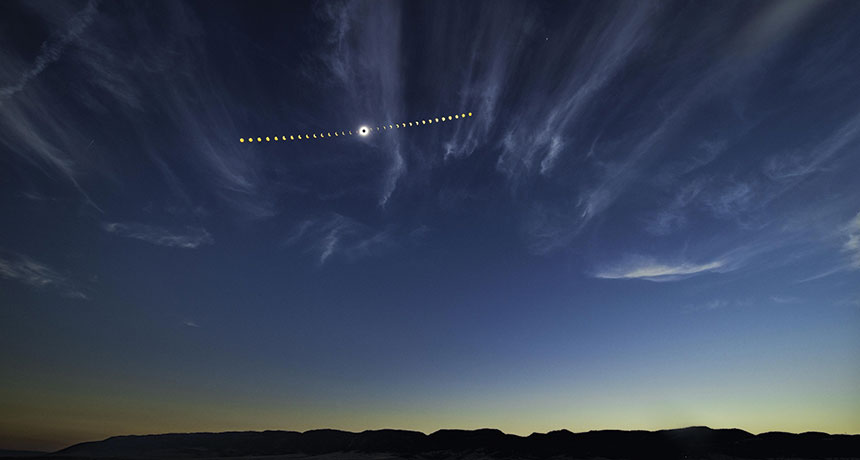
Science came out of the lab and touched people’s lives in some awe-inspiring and alarming ways in 2017. Science enthusiasts gathered to celebrate a total solar eclipse, but also to march on behalf of evidence-based policy making. Meanwhile, deadly natural disasters revealed the strengths and limitations of science. Here’s a closer look at some of the top science events of the year.
Great American Eclipse
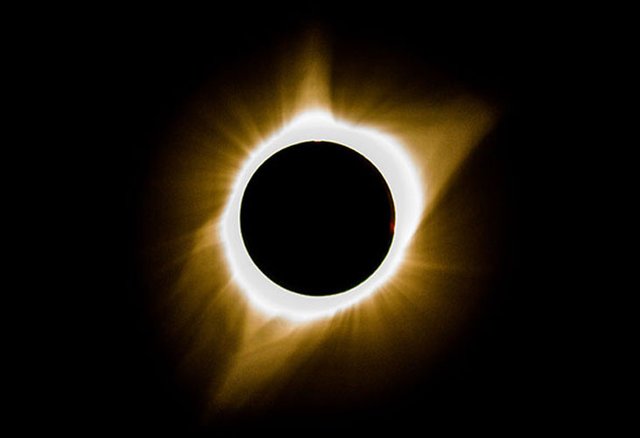
On August 21, many Americans witnessed their first total solar eclipse, dubbed the “Great American Eclipse.” Its path of totality stretched across the United States, passing through 14 states — with other states seeing a partial eclipse. This was the first total solar eclipse visible from the mainland United States since 1979, and the first to pass from coast to coast since 1918 (SN: 8/20/16, p. 14).
As people donned protective glasses to watch, scientists used telescopes, spectrometers, radio receivers and even cameras aboard balloons and research jets in hopes of answering lingering questions about the sun, Earth’s atmosphere and the solar system. One of the biggest: Why is the solar atmosphere so much hotter than the sun’s surface (SN Online: 8/20/17)? Data collected during the event may soon provide new insights.
March for Science
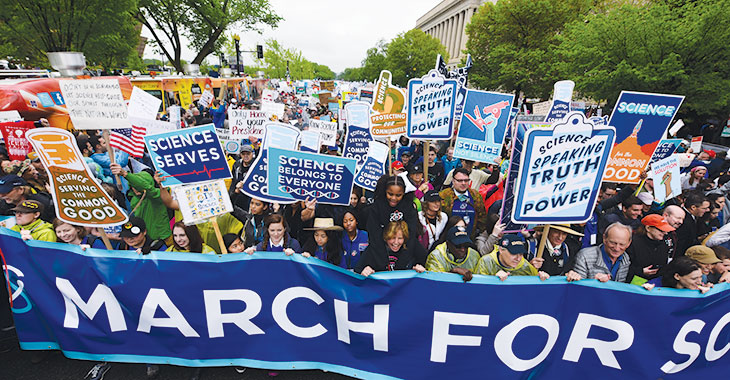
On April 22, Earth Day, more than 1 million people in over 600 cities around the world marched to defend science’s role in society. Called the first-ever March for Science, the main event was in Washington, D.C. Featured speakers included Denis Hayes, coordinator of the first Earth Day in 1970, and science advocate Bill Nye (SN Online: 4/22/17). Attendees advocated for government funding for scientific research and acceptance of the scientific evidence on climate change.
The march came on the heels of the Trump administration’s first budget proposal, released in March, which called for cutting federal science spending in fiscal year 2018 (SN: 4/15/17, p. 15). Some scientists worried that being involved with the march painted science in a partisan light, but others said science has always been political since scientists are people with their own values and opinions (SN Online: 4/19/17).
Climate deal announcement
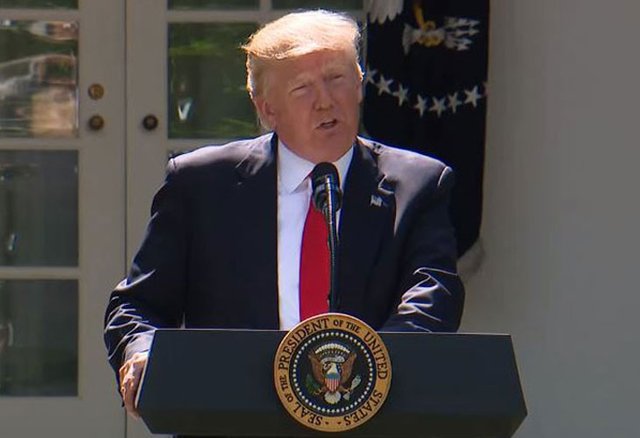
On June 1, President Donald Trump announced that the United States would pull out of the Paris climate accord (SN Online: 6/1/17) — an agreement the United States and nearly 200 other countries signed in 2015 pledging to curb greenhouse gas emissions to combat global warming. With the announcement, Trump made good on one of his campaign promises. He said during a news conference that the agreement “is less about the climate and more about other countries gaining a financial advantage over the United States.”
Nicaragua and Syria signed on to the agreement in late 2017. A withdrawal from the United States would leave it as the only United Nations–recognized country to reject the global pact. President Trump left the door open for the United States to stay in the climate deal under revised terms. A U.S. climate assessment released in November by 13 federal agencies said it is “extremely likely” that humans are driving warming on Earth (SN Online: 11/3/17). Whether that report — the final version of which is due to be released in 2018 — will have an impact on U.S. involvement in the global accord remains to be seen.
North Korea nuclear test
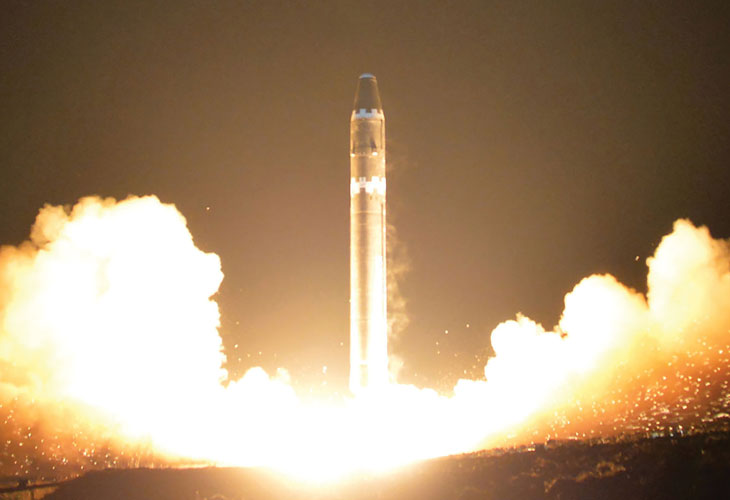
On September 3, North Korea reported testing a hydrogen bomb, its sixth confirmed nuclear detonation, within a mountain at Punggye-ri. That test, along with the launch of intercontinental ballistic missiles this year, increased hostilities between North Korea and other nations, raising fears of nuclear war. As a result of these tests, the United Nations Security Council passed a resolution strengthening sanctions against North Korea to discourage the country from more nuclear testing.
As the international community waits to see what’s next, scientists continue to study the seismic waves that result from underground explosions in North Korea. These studies can help reveal the location, depth and strength of a blast (SN: 8/5/17, p. 18).
Natural disasters
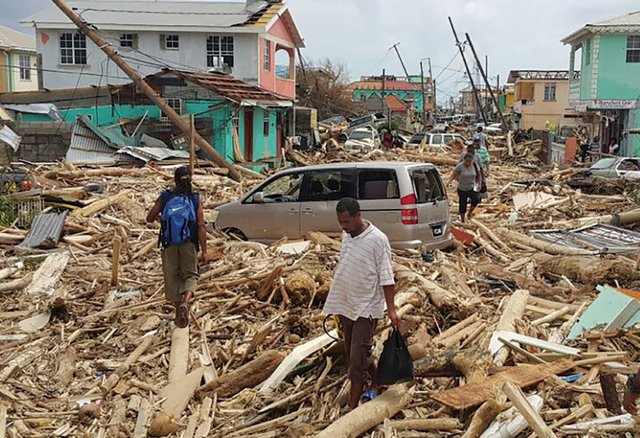
STR/AFP/GETTY IMAGES
The 2017 Atlantic hurricane season saw hurricanes Harvey, Irma and Maria devastate areas of Texas, Florida and the Caribbean. More than 200 people died from these three massive storms, and preliminary estimates of damage are as high as hundreds of billions of dollars. The National Oceanic and Atmospheric Administration had predicted that the 2017 season could be extreme, thanks to above-normal sea surface temperatures. The storms offered scientists an opportunity to test new technologies that might save lives by improving forecasting (SN Online: 9/21/17) and by determining the severity of flooding in affected regions (SN Online: 9/12/17).
In addition to these deadly storms, two major earthquakes rocked Mexico in September, killing more than 400 people. More than 500 died when a magnitude 7.3 earthquake shook Iran and Iraq in November. And wildfires raged across the western United States in late summer and fall. In California, fires spread quickly thanks to record summer heat and high winds. At least 40 people died and many more were hospitalized in California’s October fires. Rising global temperatures and worsening droughts are making wildfire seasons worldwide last longer on average than in the past, researchers have found (SN Online: 7/15/15).